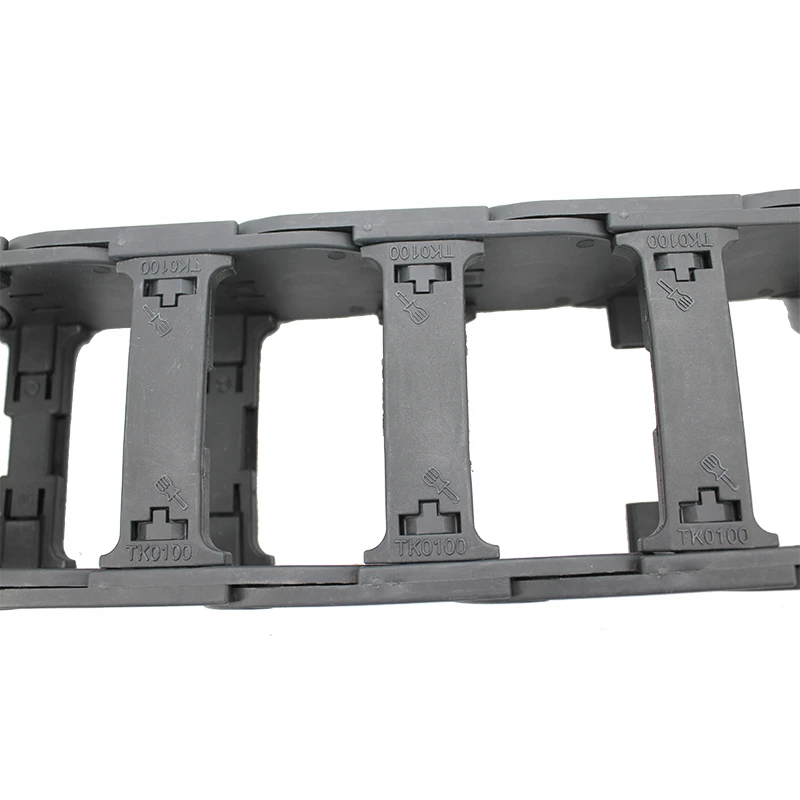CNC Cable Chain Solutions for Efficient Wire Management and Machinery Optimization
Understanding Cable Chains for CNC Machines
CNC (Computer Numerical Control) machines have revolutionized the manufacturing industry by enhancing precision and efficiency. One essential component that plays a crucial role in the optimal performance of these machines is the cable chain, also known as a drag chain or energy chain. This article explores the significance, types, advantages, and applications of cable chains in CNC machinery.
What is a Cable Chain?
A cable chain is a flexible and durable protective conduit designed to hold and manage cables, hoses, and pneumatic tubes in a way that minimizes wear and tear. Typically made from high-performance plastic or metal, cable chains allow the free movement of multiple cables or wires while preventing them from entangling or damaging one another during the operation of machinery.
Types of Cable Chains
Cable chains come in various designs and models to suit different machines and applications
. Here are the most common types1. Plastic Cable Chains Lightweight and corrosion-resistant, these chains are usually preferred for their cost-effectiveness and flexibility. They are ideal for applications where conditions are not excessively harsh.
2. Metal Cable Chains These offer enhanced durability and are employed in environments where high temperatures, chemicals, or extreme mechanical stress are present. Metal chains can withstand greater loads and are suitable for more demanding applications.
3. Open and Closed Cable Chains Open chains allow for easy access to cables, making maintenance simpler, while closed chains provide better protection against dust and debris, making them ideal for more challenging environments.
Advantages of Using Cable Chains in CNC Machines
cable chain cnc

1. Protection One of the primary benefits of using cable chains is the protection they offer. By enclosing cables and hoses, they prevent damage caused by wear and tear, reducing downtimes and maintenance costs.
2. Organization Cable chains keep wires and hoses organized, minimizing clutter around the CNC machine. This improves the overall workspace, allowing better visibility and enhanced safety for operators.
3. Flexibility As CNC machines often operate in dynamic environments and require a range of movements, cable chains are designed to flex and articulate with the machine, ensuring that cables remain managed and functional without hindrance.
4. Load Bearing Cable chains can support the weight of multiple cables, hoses, and other components. They help distribute this weight evenly, reducing stress on critical connections and promoting longevity.
5. Enhanced Mobility By providing a controlled pathway for cables, cable chains contribute to the smooth operation of CNC machines, allowing for intricate and rapid movements without the risk of cable snags.
Applications of Cable Chains in CNC Machines
Cable chains are essential in numerous CNC applications. They are commonly found in CNC milling machines, CNC routers, laser cutting machines, and plasma cutters, where precision and reliability are paramount. Additionally, they are utilized in robotic arms and automated systems, significantly enhancing their performance by ensuring cables are managed efficiently.
Conclusion
In summary, cable chains are indispensable components of CNC machines. They provide protection, organization, and flexibility, contributing to the longevity and efficiency of both cables and machinery. As industries continue to pursue higher precision and reliability in manufacturing processes, the role of cable chains will remain critical. Understanding the various types and benefits of cable chains will help operators and manufacturers alike in making informed decisions that enhance the performance of CNC machinery. By investing in high-quality cable chains, companies can optimize operations, reduce maintenance costs, and ultimately, improve their bottom line.








